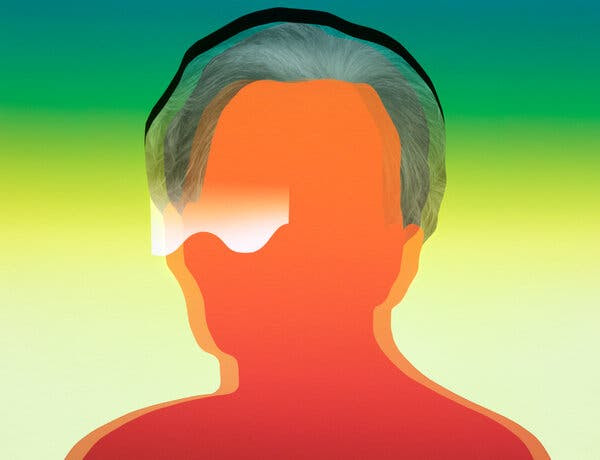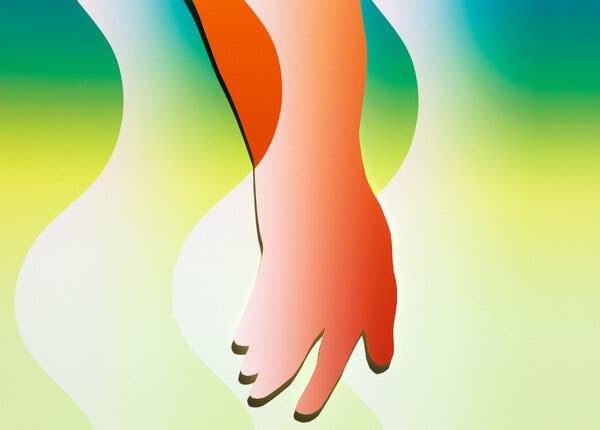
By Lisa Sanders, M.D.
March 4, 2021
The voice on the phone was kind but firm: “You need to go to the emergency room. Now.” Her morning was going to be busy, replied the 68-year-old woman, and she didn’t feel well. Could she go later today or maybe tomorrow? No, said Dr. Benison Keung, her neurologist. She needed to go now; it was important. As she hung up the phone, tears blurred the woman’s already bad vision. She’d been worried for a while; now she was terrified.
She was always healthy, until about four months earlier. It was a Saturday morning when she noticed that something seemed wrong with her right eye. She hurried to the bathroom mirror, where she saw that her right eyelid was drooping, covering the top half of the brown of her iris. On Monday morning, when she met her eye doctor, she was seeing double. Since then she’d had tests — so many tests — but received no answers.
The woman walked to the bedroom where her 17-year-old granddaughter was still asleep. She woke her and asked for help getting dressed. Her hands were too weak for her to button her own clothes or tie her shoes. When she was completely dressed, she sent the girl to get her mother. She would need a ride to the hospital. She hadn’t been able to drive since she started seeing double.
Dozens of Tests
The events of the past few months had left the woman exhausted. First, she had seen her eye doctor. He took one look at her and told her that she had what’s called a third-nerve palsy. The muscles of the face and neck, he explained, are controlled by nerves that line up at the top of the spine. The nerve that controlled the eyelid, called the oculomotor nerve, was the third in this column. But he didn’t know what was affecting it or how to fix the problem. She needed to see a neuro-ophthalmologist, a doctor who specialized in the nerves that control the eyes.
That specialist saw her right away, but he couldn’t tell her what had caused her double vision either. And since then, she had seen many specialists and had dozens of tests: blood tests, CT scans, M.R.I.s, biopsies. No one could tell her what she had, but she now knew a long list of terrible diseases that she didn’t have. It wasn’t a brain tumor or an aneurysm. She hadn’t had a stroke. There was no sign of vasculitis.
All that testing was draining. She felt so weak, so tired. She was a salesperson in a department store and often had to move items on the floor. It wasn’t a strenuous job, but lately, it was a lot harder. Her hands seemed to lack strength; she bought a brace for her wrist, but it didn’t help much. It got so bad that it was hard to even open a door.
When she told Dr. Alissa Chen, her primary-care doctor, about it, Chen got worried. She was still in training, but the patient trusted her. Chen examined her hands and arms closely. Her muscles were very weak.
That’s when she ended up in the hospital the first time. Chen sent her straight from her office to the emergency room. She spent three days in the hospital. There she met Keung, a specialist in diseases of the nerves and muscles. He ordered more blood tests, another M.R.I., and a spinal tap. By the time she went home, he had only added to the list of diseases that had been ruled out. It wasn’t multiple sclerosis or Guillain-Barré syndrome. It probably wasn’t sarcoidosis. It probably wasn’t cancer, though she was supposed to go see an oncologist to make sure.
Image

Credit…Photo illustration by Ina Jang
400 in a Million
When she got home from the hospital, Chen called her. She had a theory about what the patient might have. Had she ever heard of a disease called myasthenia gravis (M.G.)? In this rare disorder, the body’s immune system attacks what’s called the neuromuscular junction, the point where the nerves connect to the muscles to tell them what to do. It often starts in the eyes — with a droopy eyelid and double vision. But then it usually spreads to other parts of the body. Patients with myasthenia have muscles that tire out much more quickly than normal. There are fewer than 400 cases per million people, and Chen had never seen a case; still, she thought there was a strong chance the patient had it. A simple blood test could give them an answer. She had ordered it already, and she urged the patient to go to the lab and get it.
Three weeks later when she went back to see her doctor, the patient still hadn’t gotten the test. And now she had a new problem: Her mouth felt weak. Talking was hard; her voice was different. By the end of even a short conversation, her words were reduced to whispers. She couldn’t smile, and she couldn’t swallow. Sometimes when she was drinking water, it would come out of her nose rather than go down her throat. It was strange. And scary.
Chen wasn’t there, so she saw a colleague, Dr. Abhirami Janani Raveendran, who was also a trainee. Raveendran had never seen M.G. either but knew that it could affect the muscles of the mouth and throat. She urged the patient to get the blood test, and she sent Keung a note updating him about the patient’s disturbing new symptoms and the possible diagnosis.
When Keung saw the message, he was alarmed. He agreed that these symptoms made myasthenia gravis a likely diagnosis. And a dangerous one: Patients with M.G. can lose strength in the muscles of the throat and the diaphragm and become too fatigued to take a breath. He called the patient. Her voice, he noticed, was nasal and thin — signs of muscle weakness. She said she wasn’t having any trouble breathing, but Keung knew that could change. That’s why he told her to go to the hospital right away. He scared her. He meant to.
A Series of Small Shocks
After the patient got Keung’s urgent call, her daughter drove her to the emergency department at Yale New Haven Hospital, and she was admitted to the step-down unit. This is the section for patients who are not quite sick enough to need the I.C.U. but might get to that point before long. Every few hours a technician came in to measure the strength of her breathing. If it got too low, she would have to go to the I.C.U. and maybe end up on a breathing machine.
Keung wasn’t certain that the patient had myasthenia. Her eyelid was always droopy, her vision always double. With M.G., he would expect those symptoms to worsen after using the muscle and improve after resting. And M.G. usually affected the muscles closest to the body. He would expect her shoulders to be weak, not her hands. Despite his uncertainty, he decided to start the treatment for M.G. He didn’t want to risk having her become even weaker. She was given high-dose steroids and intravenous immunoglobulins to suppress the parts of the immune system attacking the connection between her nerves and her muscles.
The next day Keung performed a test that would show whether the patient had M.G. In the repetitive-nerve-stimulation test, a tiny electrode is placed over the muscle, in this case the abductor digiti minimi, the muscle that moves the pinkie finger. A series of small (and uncomfortable) shocks are delivered in rapid sequence, each causing the muscle to contract. In someone with normal nerves and muscles, each identical shock will produce an identical muscle contraction. In this patient, though, the first shocks produced weak contractions and then they became even weaker. That drop-off is characteristic of M.G. The blood test that Chen had been urging her to get was done in the hospital. It was positive. She had myasthenia gravis.
The patient stayed in the hospital for nearly two weeks. That first night her breathing was so bad she almost ended up in the I.C.U. And there were days when her arms were so weak she couldn’t even feed herself. Her daughters and granddaughters took turns coming to see her in the hospital to help her eat and care for herself.
But slowly her strength began to return. Her voice came back, and she was able to swallow. She graduated from puréed foods to chopped and ultimately back to a normal diet. And finally she went home. That was four months ago. She will probably need to take immune-suppressing medications for the rest of her life. And she still has double vision in bright light. But, she told me when I saw her recently, she can smile again. That’s important, too.

Leave a Reply